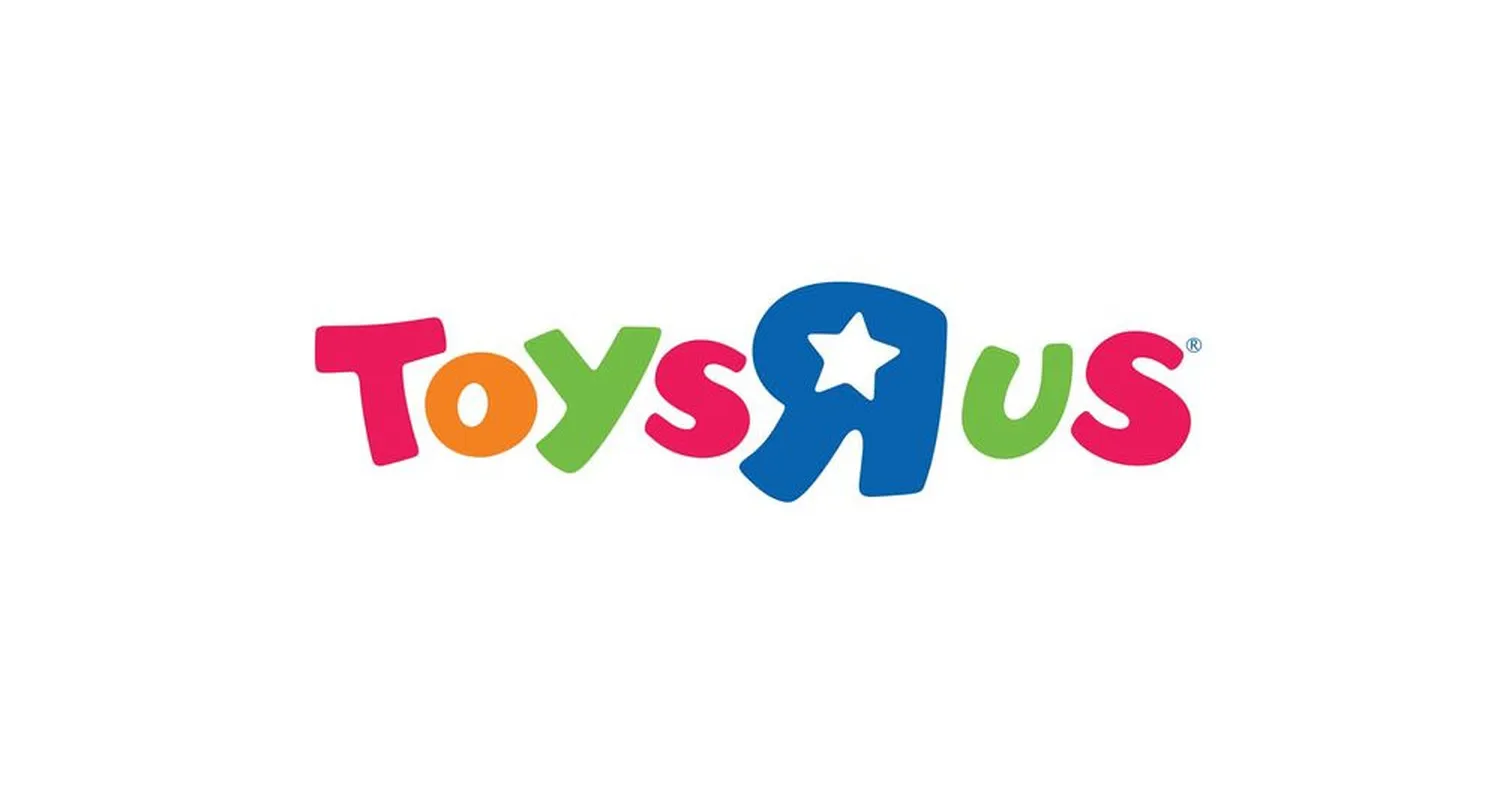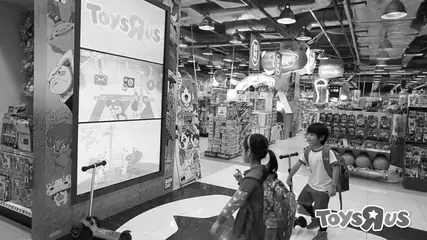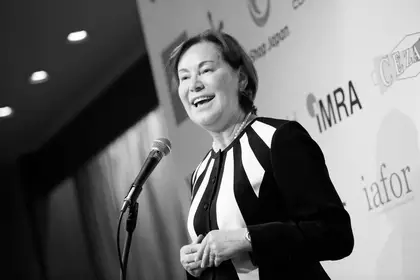Monika Merz joined Toys “R” Us Canada in 1996 as Vice President, General Merchandise Manager. In 2000, she was promoted President of the Canadian operations, becoming the first woman to hold the top post at one of the global company’s national subsidiaries.

Founded in Washington D.C. in 1948 as Children’s Supermarket, the company thrived in the post-World War II baby boom, growing aggressively by acquisition and organically before rebranding as Toys “R” Us in 1957. Its large format stores grew so quickly throughout the US, the company all but drove out the competition.
In 1984, Toys “R” Us began looking abroad for expansion opportunities and opened its first international store in Canada. Further international expansion gave Toys “R” Us a footprint in 35 countries, with the Asia/Oceana region soon becoming its second-largest market after the US.
Today the company is ranked twenty-fourth by Forbes among US privately held companies with more than 1,500 stores, over 60,000 employees and annual sales exceeding USD 12bn. Competition from brick and mortar and online retailers has eroded the company’s market share in recent years, but Toys “R” Us remains the largest freestanding chain selling toys and children’s products in the world, despite filing for Chapter 11 bankruptcy protection in September.
Innovation Drives Growth
The top role at Toys “R” Us Canada was challenging, recalled Merz. “I quickly came to understand the importance of having a team that was aligned. It was a tumultuous time, but within six months, we had a great team that could move the business forward,” she recalled.
The US parent company operated two formats – Toys “R” Us and Babies “R” Us. Merz concluded this was the wrong strategy for Canada and convinced her team and the company’s senior management to support a pilot store to test her conviction. Despite some skepticism, Toys “R” Us Canada opened its first integrated Toys/Babies “R” Us.
Sales grew so quickly at the first integrated store that the combined format was quickly adopted throughout Canada, contributing to revenue growth between 12% and 13% over the next several years and a much-improved bottom line. The combined format was subsequently adopted in the US and elsewhere, to similar success.
Success Brings New Challenges
The acclaim she garnered in Canada for her innovative leadership led to a new opportunity when Toys “R” Us asked Merz to turn around its underperforming business in Japan in 2007.
Despite never having been to Japan, not knowing the language and concerns about being accepted as a woman leader in a traditionally patriarchal society, Merz was not one to shy away from a challenge. She accepted the role of President, CEO and Representative Director at Toys “R” Us Japan and packed her bags.
The Japanese subsidiary had struggled with a revolving door of CEOs and declining sales. The US parent company increased its stake from 49% to 90% and needed a strong leader to assert its controlling interest and return the business to growth.
Merz saw a slew of problems that needed to be addressed immediately upon arrival, she said. “A previous CEO decided that because moms shopped in the stores, they should carry housewares, so the concept had become diluted,” she noted. Toys “R” Us Japan relied heavily on the video hardware and software business, a declining segment increasingly contested by other retailers, driving down margins, she added.
“There was a real profit issue as expenses were out of control,” she added. A new prototype store of the future had lost USD 1m in 10 months, for example. “This gives you an idea of how strategies were really going very wrong,” she said.
Merz didn’t dwell on the unfamiliarity of her new country and relied on a decidedly pragmatic methodology. “My approach,” she said, “is to go in and say, ‘This is who I am. I will build a team and we will find a way of working together.’”
The first order of business was to assess the existing team to determine its capabilities and the working style of her colleagues. “Toys “R” Us Japan was really a Japanese company, where people are traditionally promoted on the basis of seniority and tenure. Underperformers were moved rather than terminated. This thinking is deeply ingrained. I changed that because I had to have a viable team,” she said.
Hiring locally in areas like marketing and merchandising was difficult as the talent pool was thin, Merz said, so she brought in expats where necessary. The existing team was very strong in other areas, like store operations, finance and real estate, she noted.
Cross Cultural Competence Put to the Test
Once her team was in place, there were cultural differences to work through. Merz had taken a cultural training course prior to beginning her stint in Japan, which she said made her think, “Oh my God, I’m not allowed to say anything!”
Initially, she tempered her management style out of caution. “I think that immobilized me for a couple weeks because there are all these rules. I’m very direct and although I tried to change, it wasn’t working, so I came back to who I was. It turned out not to be an issue,” she said.
Two children play with an interactive display in a Toys R Us store, JapanMerz set out to build a collaborative team where colleagues could offer input and bring ideas to the table, which proved challenging initially, she said. She’d been told her staff in Japan might be reluctant to speak up, but when she asked what they thought directly, they were unreserved, she said. Once her team members realized they could offer input without repercussion, they began to communicate more freely, she said, noting, “I ended up having a pretty engaged team.”
Suppliers to Toys “R” Us Japan had been allowed a free hand. As a result, merchandising was inconsistent and standards had deteriorated. The stores had to take back control and set a new bar, which came as a shock to vendors, she said. Higher standards resulted in improved sales and the vendors came to embrace the change, however, she noted.
Resolve Pays Dividends
Merz lived through a number of catastrophic events during her time as CEO of Toys “R” Us Japan, including several earthquakes, a tsunami and the nuclear meltdown at Fukushima. Many expats left the country in the aftermath of these disasters, but Merz stayed to support her team and keep the business on track. Her primary concern was the safety of employees and their families, she said, but the business faced serious challenges too.
In the earthquake and tsunami of 2011, Toys “R” Us Japan sustained damage at 36 stores, many of them hit severely. Another 130 needed to maintain normal operations at a time when the country had been brought to a virtual standstill with power outages, fuel shortages and the loss of many essential services. The company supported members of staff and their families with a donation of USD 250,000 from headquarters in the US and another USD 100,000 raised locally.
Despite these disasters, the business grew. Merz reoriented the company with its customers and improved service. A strong loyalty program built under her watch provided rich customer data that allowed management to make more informed strategic decisions.
The company had to look at how the digital world was impacting business, Merz noted. “We needed to look at what kind of shopping experience would bring them back into the stores versus buying on-line. The changing consumer landscape is a big shift for any company,” she added.
Catalyzing an evolution of the company culture at Toys “R” Us Japan was another key challenge, said Merz. She encouraged critical thought among the staff and replaced traditional advertising with digital and social media strategies. Interactive displays were introduced at the stores, creating a fun experience that attracted families.
“With the new customer-focused strategy in place, I had to look at the team to ensure we had the right skills to execute against the strategy,” said Merz. “I introduced a better evaluation process and promotions were now based on performance. The people that were strong and accountable embraced the changes and understood it was good for business and for them. With those incapable of adapting to change, you have to make some tough and strategic decisions for the good of the whole team,” she said.
Fine-Tuning a Regional Mandate
On the heels of a successful turnaround in Japan, Merz was promoted once again, this time to President, Toys “R” Us Asia Pacific. Operations in China, Malaysia, Singapore, The Philippines, Thailand and Australia were added to her mandate. She was responsible for the company’s growth and profitability in seven countries, representing some 300 stores, 10,000 employees and USD 2bn in annual revenue.
These new markets were easier transitions, she said, as the company had a strong local partner, Li & Fung, with culturally savvy teams in place, she said. “Because they knew their markets, we gave them the ability to influence the merchandise assortment to align it with local demand,” she noted.
Under her leadership, Toys “R” Us grew significantly across the region. Each market required a unique approach and delicate fine-tuning, she said. Some markets, like China, grew through aggressive expansion and others by relocating and refurbishing stores to drive sales and increase profitability.
Customer behavior differed market-to-market, making it a challenge to know which new products would sell well in each country, she said. It was critical to get out into the marketplace, talk to people and really understand the customer, she said. She joined local chambers and organizations to grow her network and engage with the business community as well, she said.
The biggest challenge across the board was reigning in managers who had been left to their own devices for a bit too long and had lost sight of their customers, she noted.
A Lasting Legacy
After nearly 20 years with Toys “R” Us, Merz retired in 2016. She left in her wake a reputation for building strong teams, introducing innovative ideas and tight financial management. Although Toys “R” Us recently filed for Chapter 11 to address the company’s legacy debt burden stemming from its 2005 leveraged buyout, the Asia Pacific region is not included in the bankruptcy proceeding.
Monika Merz speaks at the ACCJ Chubu Diversity Summit in Nagoya, Japan, 2014“The greatest learning I came away with is that people all want the same things out of life. Employees want to be valued and be part of the company. Consumers want to know that they are getting value for their money. In those things people are very much the same worldwide,” Merz said.
Merz found success by challenging the status quo throughout her career at Toys “R” Us, regardless of the cultural paradigms in which she operated. She said she hopes her legacy will inspire others to look outside their own world, challenge themselves, anticipate change and “be prepared for the headwinds, because they always come”.
Executive Summary
Monika Merz rose through the ranks of Toys “R” US by challenging the status quo and making bold, innovative changes while growing the company in a series of senior international posts. Her guidance is grounded in a set of universally applicable good business practices, particularly relevant to the global retail industry:
- Know your customer: Start by focusing on the local consumer. Gain insight into what motivates them. Design a strategy to meet their needs and align the team around that strategy.
- Engage your audience: Create an alluring experience for consumers rather than relying on products alone to drive sales.
- Be yourself: Stay true to your tried and tested management style, while being flexible. Find ways to effectively adapt to new cultures rather than attempting to adopt them.
- Build the right team for the job: Shake up the dynamics to meet your needs, even if it requires making hard decisions or affecting the existing power structure.
- Think outside the box: Challenge the status quo to find solutions that work, despite what may have worked in the past and the established conventions.
- Stay relevant: Innovation has no borders; anticipate the impact of consumer and market trends. Keep tabs on what’s happening in your industry globally.
- Nurture loyalty: Use data, technology and experiences to ensure repeat business.
- Cut the fat: Put a stop to unnecessary and misguided expenditures.




